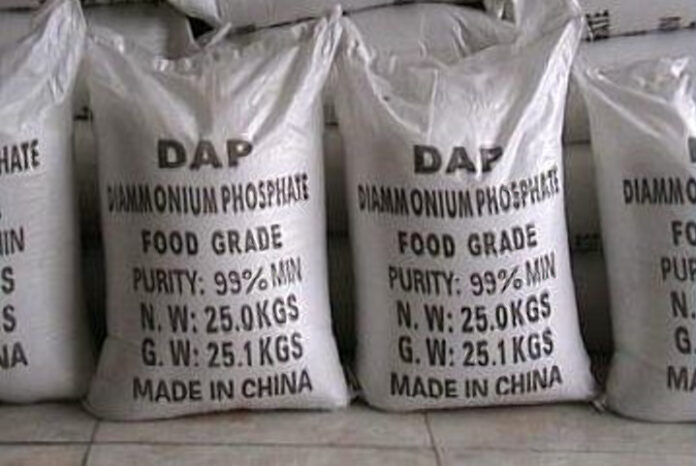NPK vs DAP: During the current crop season there has been an outcry from farmers in Rift Valley over fertiliser supply, availability, quality and type.
Today, I will narrow my discussion to Diammonium Phosphate (DAP) and NPK and their impact on the soils and yields. Reports have indicated that majority of farmers in Rift Valley are fixated on using DAP despite the State’s insistence that they use NPK.
NPK vs DAP
The traditional fertiliser used in planting of maize and wheat in Rift Valley is DAP. It contains 18 per cent N and 46 per cent P2 O5. In the current season, DAP had not arrived in stores of National Cereals Board by the time farmers were planting.
The extension officers were persuading farmers to use the available NPK (23:23:0) that contains 23 per cent N and 23 per cent P2 O5 arguing that it is better than the DAP because it does not increase soil acidity.
The farmers objected arguing that they wanted to use the fertiliser they trusted — DAP. Actually, NP fertiliser is more concentrated in nitrogen but weaker in phosphate. Since the farmers have been using DAP over the years, it is unlikely that the soils require such a fertiliser.
Cars not to buy in Kenya: 10 cars to avoid when you are on a tight budget
To clear the air, a simple test called phosphate fixation capacity can indicate whether the soil requires phosphorus fertilisation every season. The argument by extension officers that the NPK fertiliser is superior to DAP because the latter does not acidify soils is highly debatable.
First, we do not know the nutrient carriers that supply nitrogen in the NP fertiliser supplied by the National Cereals Board.
Unless the carrier salts supplying nitrogen in the NP fertiliser were only containing nitrates (for example potassium nitrate or calcium nitrate) and not ammonium nitrogen — which is rare because of their higher cost- then NP fertilisers are also soil acidifying. Unfortunately, for fertilisers, the Kenya Bureau of Standards do not require supplying information on the types of nutrient materials labelled on the bag.
Single superphosphate (SSP)
This fertiliser contains an average 18 per cent soluble phosphate as P2 O5. It also contains calcium (20 per cent) and sulphur (11-12 per cent).
The carrier materials of these nutrients are monocalcium phosphate and gypsum. Although the phosphorus content is relatively low the presence of calcium and sulphur makes it valuable for our soils that have very little organic matter.
In fact, this is the fertiliser that was used during planting of cereals in the 1970s until our soils became depleted of organic matter that led to low soil nitrogen.
If the farmers had practiced rotation with pastures and incorporated crop residues like straw and maize stovers, this problem would not have arisen.
If farmers can increase the content of organic matter to supply starter nitrogen at early stages of cereal growth, followed by side-dressing/top-dressing with calcium ammonium nitrate (CAN), there is no need to use expensive and soil acidifying fertiliser like DAP.
Side dressing or topdressing
It is important to note that fertilisers that are soluble are not recommended during cereal planting because they may be lost through leaching before the crop has established a rooting capable of taking the nutrients.
Thus it is only nitrogenous fertilisers that contain phosphates that are recommended for planting cereals. However soils rich manures or those in semi-arid and arid areas can hold much nitrogen if it is contained in ammonium form and thus have less the nitrogen losses.
Top vs side dressing?
Side-dressing (placing fertilisers along the plant rows or around the plant) and topdressing (broadcasting fertilisers on a dense crop like wheat or pastures) are confined to soluble fertilisers like straight (purely) nitrogenous fertilisers and the very soluble potassic ones. They are applied when the crop is vigorously growing and on moist soil.








